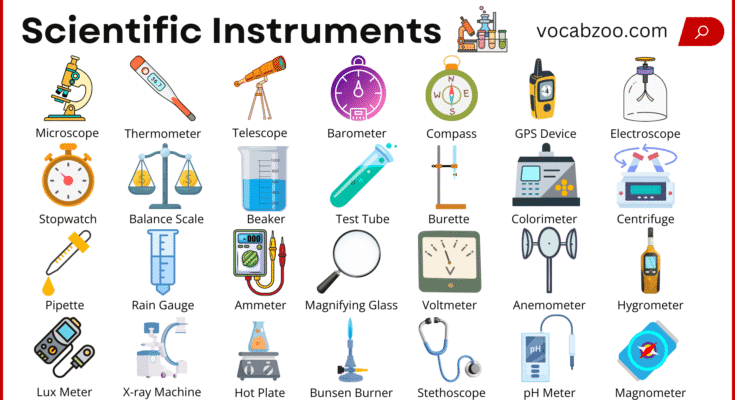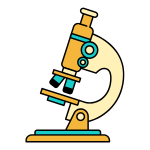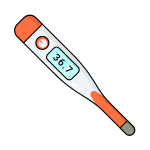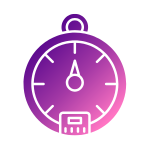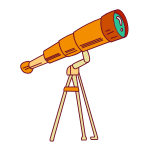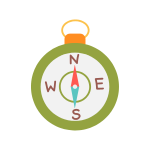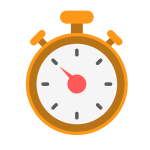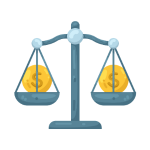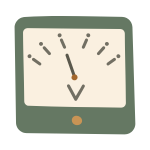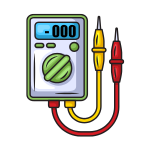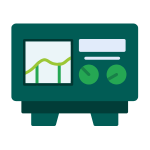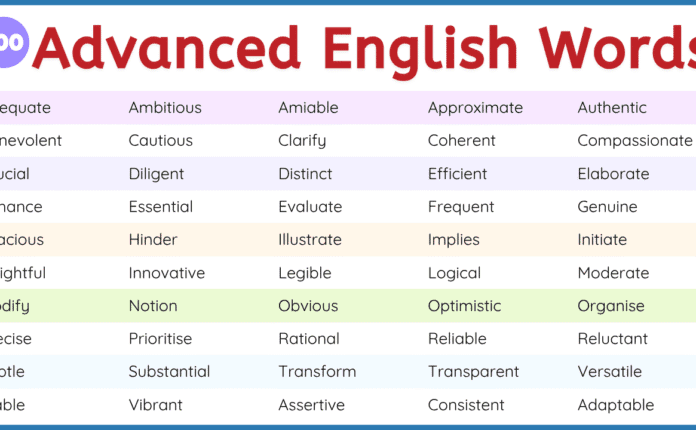Science helps us understand the world around us, and scientific instruments make it possible. These tools are used by scientists, students, and researchers to study, measure, and observe natural things. In this article, you will learn about the most common scientific instruments, their names, uses, and some pictures that help you recognise them easily.
What are Scientific Instruments?
Scientific instruments are tools or devices used for experiments, measurements, and observations in science. They help people to study physics, chemistry, biology, and other branches of science.
Examples:
- A microscope helps scientists see tiny objects that are not visible to the naked eye.
- A thermometer is used to measure temperature.
Common Scientific Instruments and Their Uses
Here is a table that shows the name of each instrument, its picture, and its use:
Instruments Used in Physics
Physics deals with matter, energy, and motion. These instruments help in experiments related to force, electricity, and motion.
- Barometer → Measures air pressure
- Voltmeter → Measures electric potential
- Ammeter → Measures current in circuits
- Thermometer → Checks temperature changes
- Stopwatch → Records time intervals
Quick Tip: Physics tools help students understand motion, speed, and electricity in real-life experiments.
Instruments Used in Biology
Biology is the study of living things. Instruments in biology help scientists and students to observe cells, tissues, and organisms.
- Microscope → Used to see microorganisms
- Magnifying Glass → Helps to enlarge small objects
- Slides and Cover Slips → Used to hold samples under microscope
- Petri Dish → Used for growing bacteria or fungi
- Dissecting Set → Helps to study body structure of organisms
Instruments Used in Chemistry
Chemistry instruments help scientists to mix, measure, and analyse substances. These tools are often used in laboratories.
| Instrument | Use / Function |
|---|---|
| Beaker | Holds and mixes liquids |
| Test Tube | Used for chemical reactions |
| Burette | Measures precise liquid amounts |
| Pipette | Transfers small volumes of liquid |
| Conical Flask | Used to mix or heat solutions |
| Crucible | Used for heating substances at high temperatures |
Instruments Used in Geography and Environment
These instruments are used to study weather, climate, and earth’s surface.
| Instrument | Use / Function |
|---|---|
| Anemometer | Measures wind speed |
| Rain Gauge | Measures rainfall amount |
| Barometer | Measures air pressure |
| Hygrometer | Measures humidity |
| Seismograph | Detects earthquakes |
List of Asian and European Scientific Instruments
Here are some popular scientific instruments developed or commonly used in Asian and European regions:
| Region | Instrument Names |
|---|---|
| Asia | Microscope, Telescope, Barometer, Compass, Beaker, Test Tube, Voltmeter |
| Europe | Thermometer, Spectrometer, Seismograph, Hygrometer, Balance Scale, Burette, Anemometer |
Complete List of Scientific Instruments Names
Physics Instruments
- Ammeter
- Voltmeter
- Galvanometer
- Barometer
- Manometer
- Thermometer
- Hygrometer
- Hydrometer
- Anemometer
- Altimeter
- Speedometer
- Seismograph
- Oscilloscope
- Dynamometer
- Potentiometer
- Multimeter
- Ohmmeter
- Electroscope
- Polarimeter
- Spectrometer
Chemistry Instruments
- Beaker
- Test Tube
- Pipette
- Burette
- Conical Flask
- Round Bottom Flask
- Measuring Cylinder
- Crucible
- Retort Stand
- Funnel
- Evaporating Dish
- Distillation Flask
- Refractometer
- Titration Apparatus
- Desiccator
- Centrifuge
- pH Meter
- Colorimeter
- Chromatograph
- Spectrophotometer
Biology Instruments
- Microscope
- Magnifying Glass
- Petri Dish
- Dissecting Set
- Slide and Cover Slip
- Incubator
- Autoclave
- Stethoscope
- Sphygmomanometer
- Centrifuge Machine
- Haemocytometer
- Microtome
- Electrophoresis Apparatus
- Inoculating Loop
- Laminar Air Flow Cabinet
- Incubator Shaker
- Hot Air Oven
- DNA Sequencer
- Cell Counter
- Water Bath
Geography & Environmental Instruments
- Rain Gauge
- Wind Vane
- Compass
- Thermograph
- Hygrograph
- Soil Thermometer
- Pyranometer
- Barograph
- Pedometer
- Sound Level Meter
- Lux Meter
- Geiger Counter
- Magnetometer
- Clinometer
- GPS Device
Medical & Health Instruments
- Thermoscope
- ECG Machine (Electrocardiograph)
- EEG Machine (Electroencephalograph)
- X-ray Machine
- MRI Scanner
- CT Scanner
- Ultrasound Machine
- Endoscope
- Otoscope
- Ophthalmoscope
- Glucometer
- Spirometer
- Defibrillator
- Blood Pressure Monitor
- Thermocycler (for PCR)
Astronomy & Space Instruments
- Telescope
- Radio Telescope
- Spectrograph
- Photometer
- Astrolabe
- Sextant
- Star Tracker
- Planetarium Projector
- Interferometer
- Satellite Sensor
General Laboratory Instruments
- Stopwatch
- Stopwatch Timer
- Balance Scale
- Weighing Machine
- Measuring Tape
- Ruler
- Calliper
- Vernier Scale
- Spirit Level
- Microslide Box
- Laboratory Thermostat
- Bunsen Burner
- Hot Plate
- Tripod Stand
- Glass Rod
- Wire Gauze
- Wash Bottle
- Mortar and Pestle
- Clamp Holder
- Tongs
This complete list covers all major branches of science and is suitable for students, teachers, and science learners.
Why Are Scientific Instruments Important?
Scientific instruments help scientists observe facts, prove theories, and create inventions. Without these tools, it would be difficult to study nature or perform experiments accurately.
Examples:
- A telescope helped scientists discover planets and galaxies.
- A microscope allowed doctors to understand diseases and cells.
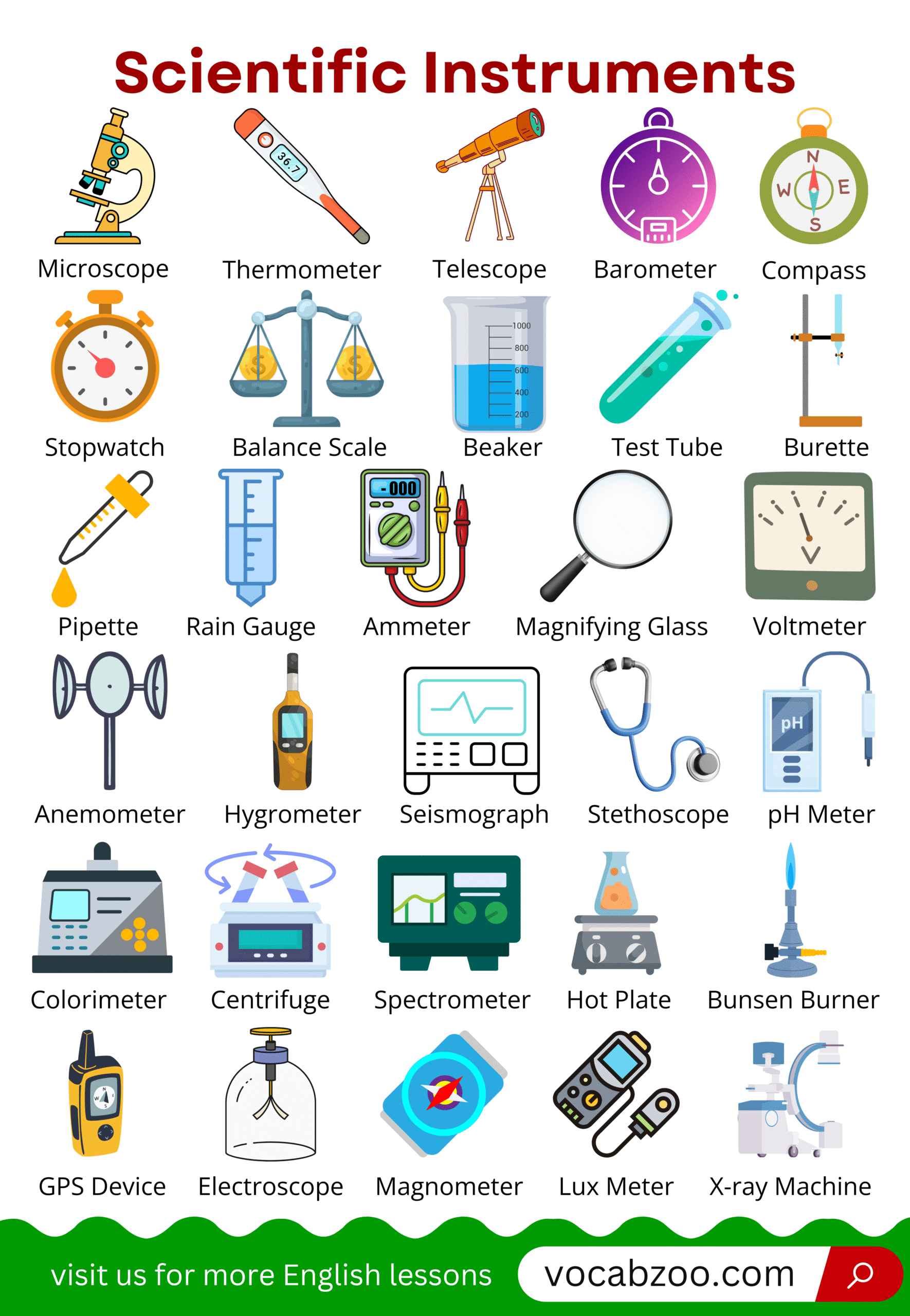
Scientific instruments are essential tools that make learning and discoveries possible. From microscopes to telescopes, every instrument helps us to see and measure what our eyes cannot. Understanding their names and uses will not only improve your science vocabulary but also help you in daily life learning.
FAQs about Scientific Intruments
What are scientific instruments?
Scientific instruments are tools or devices used by scientists and students to measure, observe, and experiment in different branches of science like physics, chemistry, and biology.
What are the most common scientific instruments used in schools?
The most common school instruments include the microscope, thermometer, test tube, beaker, compass, and balance scale — all used in basic science experiments.
What is the use of a microscope in science?
A microscope is used to see small objects or living cells that cannot be seen with the naked eye. It helps students and scientists study microorganisms in detail.
How many types of scientific instruments are there?
There are hundreds of scientific instruments, but they are mainly divided into five groups — Physics, Chemistry, Biology, Environmental, and Medical instruments.
Why are scientific instruments important in daily life?
Scientific instruments are important because they help us measure, test, and discover things accurately. Tools like thermometers and compasses are also used in everyday life.
Read More
